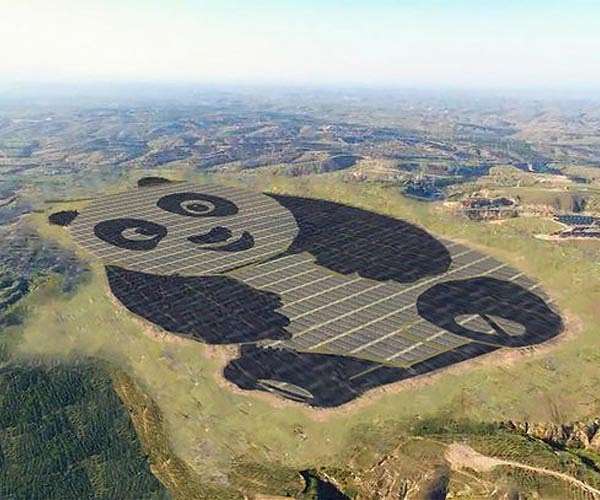The Chinese solar energy sector is at the forefront when it comes to sustainable energy
Hundreds of rows of shiny panels cover stretches of scrubby sand at sunset in a remote northern Chinese desert – once the world’s largest solar farm.
On the edge of the stark Tengger Desert, the solar farm produces 1.5 gigawatts of power, but it has since been eclipsed and the largest is now further west with more than double the capacity.
China, the world’s largest emitter of greenhouse gases, is building almost twice as much wind and solar power capacity as every other country combined.
Last week, wind and solar energy capacity exceeded a target set by President Xi Jinping, almost six years ahead of schedule.
The massive solar panels in the Ningxia region are evidence of state-led industrial policies that have fueled this breakneck growth.
South of the regional capital Yinchuan, huge trucks speed down a highway, flanked by photovoltaic panels and wind turbines stretching to the horizon.
Ningxia, like much of northwestern China, is sparsely populated and sun-drenched, dotted with small farms, vineyards and huge power stations.
This geography makes it an excellent location for generating solar energy, which is then sent to China’s eastern and southern provinces, where electricity demand is highest.
“China’s solar energy is developing at an unprecedented pace and scale,” said analyst Wu Di of Beijing University’s Institute of Energy.
The country increased its installed solar capacity by more than 55 percent last year, according to the National Energy Administration.
China now accounts for more than 40 percent of the total installed capacity worldwide, Wu said.
– ‘Demand for declining coal’ –
Beijing aims to peak planet-warming carbon dioxide emissions by 2030 and cut them to zero by 2060, as part of its commitments under the Paris climate agreement, which aims to curb global warming earth to 1.5 degrees Celsius above pre-industrial levels.
“Carbon cannot peak unless rising consumption demand is fully met by the increasing growth of clean energy,” said David Fishman, senior manager at Lantau Group, which specializes in China’s energy sector.
“Incremental growth in solar capacity is an important part of ensuring that all energy demand growth is met by clean sources.”
The government allowed only about nine gigawatts of new coal power in the first half of 2024, a year-over-year reduction of 83 percent, according to a report published this month by the Center for Research on Energy and Clean Air.
“With new renewable energy plants now able to meet all of China’s increasing energy demand, the need for new coal is decreasing,” the Finland-based independent research group said.
But it also warned that construction of existing coal projects was continuing, potentially delaying Beijing’s energy transition.
– Industry shake-up –
The blistering pace at which additional solar capacity is being added is not quite matched by developments in the electricity grid, causing some energy to be lost – a phenomenon known as curtailment.
In May, Fitch Ratings said this could continue to rise in the near term, with the solar percentage rising to four percent for the first quarter of 2024.
“To manage solar energy reduction within reasonable limits, China still has a lot of work to do in the future,” Wu said.
Transferring energy from west to east is also “not the most cost-effective approach,” said Gao Yuhe of environmental group Greenpeace East Asia.
In addition to the colossal parks in the north, China’s solar revolution has also used distributed solar energy: smaller panels on rooftops in residential and commercial areas, which reduce transmission losses.
But even this small-scale infrastructure needs to be upgraded to handle the recently increased capacity, Wu said.
China’s domestic solar panel industry, long supported by generous government subsidies, is grappling with a global oversupply crisis that has driven prices down and some companies out of business.
Lantau Group’s Fishman said the fierce competition is “good news for builders, who continue to benefit from the cheapest panels the world has ever seen.”
“If a few of them start competing because they can’t handle the competition, the market should stabilize,” he added.
Chinese subsidies have also caused friction with global trading partners, with the EU launching an investigation to determine whether the subsidies have helped domestic companies undercut European rivals.
Beijing denies that its industrial policies are unfair and has initiated a series of investigations into European imports in apparent retaliation.


